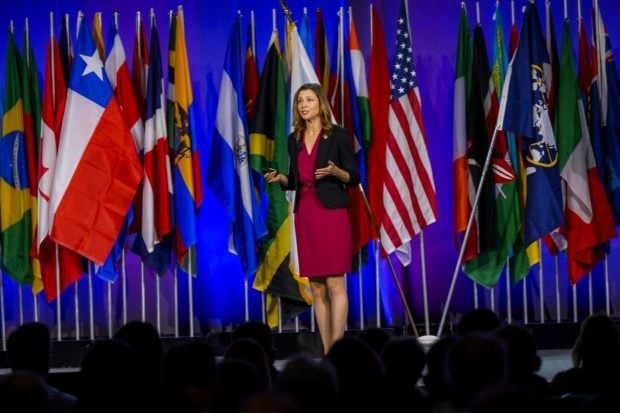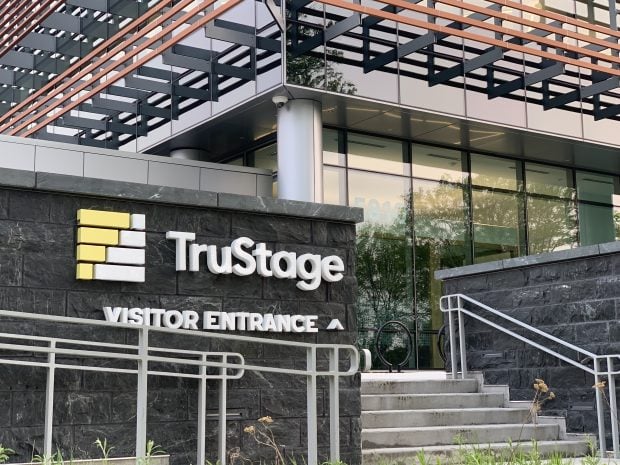The CEOs of the League of Southeastern Credit Unions and the New York Credit Union Association said Tuesday they signed a letter of intent that will create the nation's largest league collaboration project.
The trade organizations plan to establish a jointly owned subsidiary to consolidate their back-office operations and other services that are not state specific.
Bill Mellin, president/CEO of the New York association, said over the first three years of operation, the consolidation is projected to save each trade association millions of dollars.
“We have all kinds of numbers and projections, but we feel pretty comfortable that over a three year period we will be saving each entity in excess of millions of dollars on either side of the partnership,” Mellin said during a phone press conference. He also said the partnership will allow both organizations to remain independent.
Patrick LaPine, president/CEO of the Southeastern league, said the strategic collaborative partnership is different and unique.
“I think what makes this different than anything out there is that most shared services companies really focus mostly on back-office operations, traditional finance, accounting, HR and IT,” LaPine explained. “What we are also doing here, which is unique, is that in addition to traditional back-office functions, we're also looking at anything between our organizations that doesn't have to be state specific. For example, communications, education and training, product development – those are all functions that don't have to be state specific.”
Both trade associations will continue to independently operate their local, state and federal advocacy programs as well as membership relationship activities, LaPine and Mellin said.
“The other part is, and really is phase two of this whole project, is the creation of a new service corporation that would be jointly owned and jointly governed by both leagues,” LaPine said. “That would allow us to develop new products and news services for our credit unions, sign new remarketing agreements for credit unions and also liquid acquisition. That is what makes us uniquely different than anything else that is out there.”
LaPine said the new partnership will establish the nation's largest league collaborative structure that will include more than 650 credit unions across three states, which manage $142 billion in assets and serve 12 million members.
“That [structure] is going to be a powerful voice in both Washington and our state capitals, as well as with CUNA and other systems partners that we work with and vendors that we do business with as we go out to try to find ways to bring new products and services to our markets,” LaPine said. “Having that kind of scale of who we represent and who the potential customer base is, I think, will be very advantageous to us.”
Shawn Wolbert, senior vice president of finance and administration for the Southeastern league, will lead the yet-to-be named subsidiary.
LaPine said the collaborative project will take two to three years to fully implement.
“This [collaboration] is something that we want to make sure we go through in a process to make good decisions the first time and to make sure that we are setting up our respective organizations as well as this new entity for success,” LaPine said.
LaPine and Mellin also said they hope that in the future this collaborative model will attract other leagues that want to remain independent but are facing increased pressures to consolidate due to credit union mergers, which can lead to reductions in membership fees and lower service revenue streams.
Despite these pressures, LaPine and Mellin envision leagues will be able to remain independent through the cost savings and expertise of the shared services model in back-office operations and other service functions.
Another collaborative initiative that generated a lot of interest among leagues was Plexcity, a CUSO-like business established last year by the CEO of the California and Nevada Credit Union Leagues, Diana Dykstra; John Bratsakis of the Maryland-District of Columbia Credit Union Association and Greg Michlig of the New Jersey Credit Union League.
The collaborative effort combined and standardized back-office operations including HR, IT, accounting and finance among the three leagues. In August 2015, the Hawaii Credit Union League purchased a shared ownership stake in Plexcity.
Plexcity also serves one non-owner client – NASCUS.
All partners have seen a decline in the cost of back-office systems, according to Tony Kitt, Plexcity's CEO.
“Our newest addition [the Hawaii league] immediately decreases expenses for every association we serve, which contributes to their future stability,” he said. “All of our owners believe we are better at driving down costs together than we are individually.”
© 2025 ALM Global, LLC, All Rights Reserved. Request academic re-use from www.copyright.com. All other uses, submit a request to [email protected]. For more information visit Asset & Logo Licensing.








